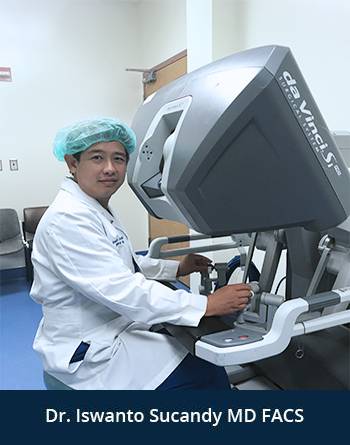#1 Robotic Liver Resection Doctor In The USA. Please visit our Robotic Liver Surgery Center In Tampa, FL
Dr. Iswanto Sucandy Robotic Liver Surgery team work collaboratively with their multi-specialty partners to undertake Robotic liver resection in a minimally invasive fashion because of its known clinical advantages and long-term positive oncologic outcomes. Minimally invasive Robotic liver resection is recommended based on tumor location, size, proximity to major vascular and biliary structures.
The vast majority of all Robotic liver resections in our Robotic liver surgery program are performed minimally invasively using the Da Vinci robotic system. As a regional and national leader in minimally invasive Robotic liver surgery, Dr. Iswanto Sucandy is able to remove small to large liver tumors through small incisions instead of an open large incision by utilizing Robotic Liver resection techniques.

Advantages of Minimally Invasive Robotic Liver Resection
2. Reduced Blood Loss - Most Robotic liver resections we have performed result in less than 100 cc of blood loss. Blood transfusion is rarely needed, even for major liver resections.
3. Less Pain - Most patient experience minimal pain and require minimal narcotics, even after major liver resections.
4. Minimal Risk for Wound Infection - The probability of having surgical wound infection is significantly lower, less than 1% when compared to open liver resection.
5. Minimal Risk for Hernia Formation - Small incisions heal with significantly lower chance of developing incisional hernias. The best way to prevent hernia formation after surgery is to avoid creating a large incision.
6. Better Cosmetic Outcome - Small incisions healed with minimal, often nearly invisible scars
How Robotic liver Operations for Benign and Malignant Liver Tumors are Performed?
Both minor and major liver resections can be done robotically. Minimally invasive liver resection is preferred over the traditional open operation whenever technically visible, determined by the operating team.


